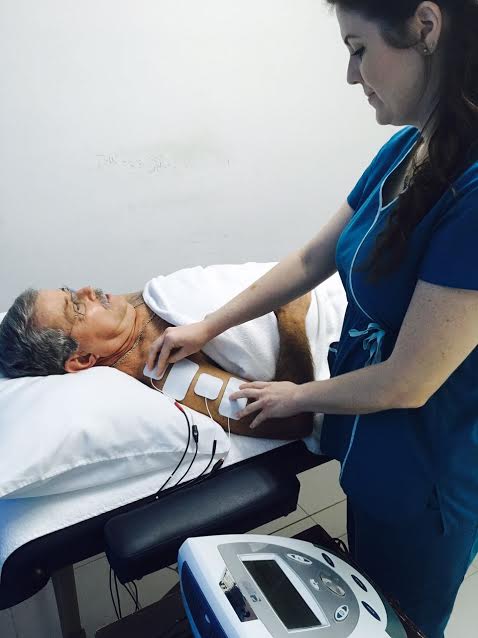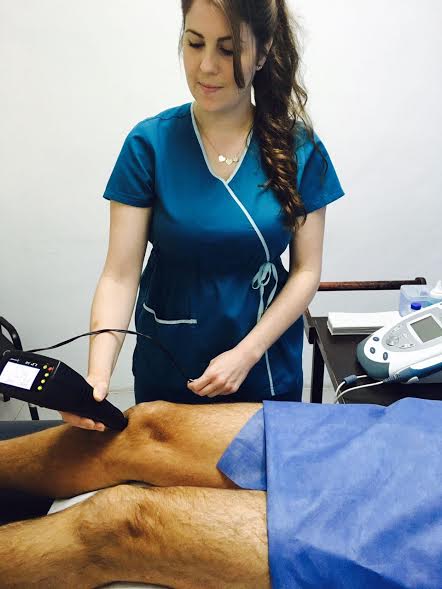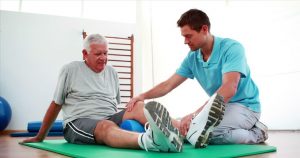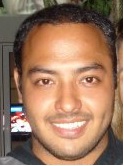I have been asked during a medical tourism tour in Canada about the existence of pain clinics or healing methods for different diseases and how easy it is to find a specialized one in the area. Here are the statistics: approximately 20% of Canadian people over 18 years old live with chronic pain; this means that 1 out of 5 patients are dealing with it day-by-day and reducing their normal active life due to the pain…
Well, the good news is that Merida is becoming a leader in focusing not only on the diagnosis but working on new treatments and management of chronic pain patients, using a multidisciplinary approach to develop a personalized program in order to reduce the symptoms and thereby improve the quality of life. The pain clinics are normally run by a pain specialist that is called an Algologist, who is an anesthesiologist with a one or two year fellowship in pain medicine, looking for one goal: the reduction of pain.
Some hospitals in Mexico may have a few staff working on pain, but a real pain clinic must involve a team of health care providers that can help you with a variety of strategies to manage your pain. There are many health care providers that are either on site or as consultants for the clinic, including doctors from different specialties as well as nonphysician providers specializing in the diagnosis. For the management of chronic pain, some of these providers may include psychologists, physical therapists, and complementary and alternative therapists such as acupuncturists or massage therapists. Together, they will set a pain management plan for you.
These are the 20 main problems that people are looking to solve, so if you are facing any of the following, you should consider an opinion to improve your actual situation:
- Cluster headaches
- Broken Bones
- Shingles
- Frozen Shoulders
- Heart Attacks
- Cancer
- CRPS
- Herniated Disc
- Arthritis
- Migraine
- Sciatica
- Kidney Stones
- Endometriosis
- Appendicitis
- Pain after Surgery
- Neuralgia
- Fibromyalgia
- Pancreatitis
- Gout
- Stomach Ulcer
In a future article we will try to explain a little bit more about the conditions mentioned above, however it is important to know that besides pain relievers such as Acetaminophen (Tylenol) or Ibuprofen for anti-inflammatory processes, there are many therapies that combined could be helpful and give excellent results.
However, it is also important to mention that, while in many countries medicines can be found without a prescription, Mexico has become a little bit special with pain-killers, so a doctor is always going to be necessary to be able to obtain them. Americans and Canadians are the top consumers of pain-killers in the world, so there must be a control regarding prescriptions. Most of the time, people are used to buying them on their own leading to a decrease in pain symptoms, but only for short terms. Also, anti-depressants could also be useful for neuropathic syndromes or sleep disorders, however specialists recommend being careful not to abuse them when it is not necessary.
Dr. Andrés Medina of Merida, a board certified anesthesiologist with fellowships in pain medicine, interventional pain medicine and hyperbaric oxygen, explains that a real pain treatment should be developed by the physician in conjunction with the patient, always checking all the options available such as:
- Infiltrations. They can be performed close and around nerves, muscles and joints to reduce swelling. Local anesthetics can be combined with corticosteroids.
- Selective Nerve Blocks. There are many conditions that can be reduced with selective nerve blocks. Depending on the area of the body affected by the pain, a block can be performed over single nerves or group of nerves (plexus or ganglion).
- Physical Therapy. Performed by a physical therapist or a physiatrist (a physician that is a specialist in rehabilitation and physiotherapy), this treatment includes many options like ultrasound and deep-muscle massage.
- Electrical Stimulation. This is one of the most common therapies used to treat pain. This therapy produces small electrical transcutaneous stimulations to the skin and nerves bellow them. It is known also as TENS.
- Micro Current Point Stimulation (MPS). This therapy is available in some clinics and represents a combination of therapies: acupuncture and TENS, direct micro-current point stimulation to acupuncture points and to tender points to relieve the pain, etc. It is performed with specialized equipment currently without needles. This nonpainful therapy can reduce up to 60% of the symptoms.
- Acupuncture. This technique based on an ancient Chinese medical practice involves inserting very thin needles at specific points on the skin to relieve pain. It is mandatory to be performed by trained specialists.
- Psychological support and counseling. Pain is a physical sensation and as a symptom it may differ from patient to patient. It always involves emotional stress that can affect quality of life. Psychological support, along with medical treatment, can be useful for you.
- Relaxation techniques. In some cases you may need more than counseling. There are psychologist and mental health professionals that can teach you self-help techniques to reduce stress and relieve pain.
- Surgery. The advantages of the pain clinics are their multidisciplinary approach to each patient condition. When surgery is clearly necessary to relieve a problem that is causing pain, it can be identified and suggested as part of the treatment. Normally the pain specialist will suggest a physician that can help with your condition when speaking about “nothing else to do”.
All types of “pain” should be treated with respect, and it is important to point out that there are many treatment plans to monitor progress. Try to involve the family members in order to make everyone part of your goals specifically, however your main goal at the end, no matter what, should be… improve your quality of life by reducing pain.
by José Enrique Lixa
José Enrique Lixa has a marketing degree from Mérida’s Universidad Marista.
He is a member of the Parque Tecnia Anáhuac entrepreneurs network with 10 years of experience as consultant and promoter of international business in the State of Yucatan.
Exhibitor at more than 50 international events promoting Yucatan.
Manager and facilitator of Medical Tourism in the State of Yucatán
Collaborator and adviser to the Canadian Healthcare Council based in Ottawa.
Collaborator of the local company Yucatán Medical Services.
Active participant since 2013 in the events of the Medical Tourism Association, Destination Health Canada and other Medical Tourism Congresses in Mexico.
- Email: [email protected]
- Ph. +52 1 9991 75 00 53





